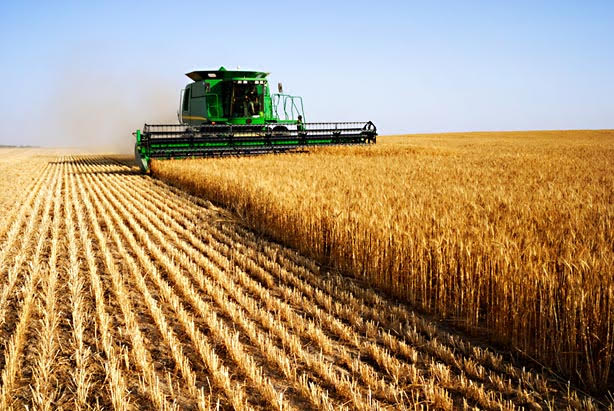Sustainable Farming Practices for Maximising Crop Yield and Protecting the Environment

In recent years, sustainable farming has become a critical focus for farmers, environmentalists, and policymakers alike. As the global population continues to grow, the demand for food is skyrocketing. At the same time, the need to protect natural resources and combat climate change has led to a rethinking of traditional farming methods.
Sustainable farming practices provide a way to meet growing food needs while minimising environmental damage. This article explores key sustainable farming techniques that can help maximise crop yield while preserving the environment.
1. Crop Rotation
One of the oldest and most effective sustainable farming techniques is crop rotation. By rotating different crops on the same piece of land season after season, farmers can prevent soil depletion and break the cycle of pests and diseases.
For example, planting legumes like beans or peas one season can naturally enrich the soil with nitrogen, making it more fertile for future crops. Crop rotation also reduces the need for chemical fertilisers and pesticides, promoting healthier soils and higher yields in the long run.
2. Organic Farming
Organic farming eliminates the use of synthetic chemicals such as pesticides and fertilisers, relying instead on natural inputs like compost and manure. This approach not only keeps harmful chemicals out of the environment but also helps maintain soil health and biodiversity.
Organic farming methods, such as using companion planting to deter pests or employing natural predators, contribute to both high-quality produce and increased biodiversity on farms.
3. Agroforestry
Agroforestry is a practice that integrates trees and shrubs into crop or livestock systems. By incorporating trees into farmland, farmers can reduce soil erosion, improve water retention, and increase biodiversity.
Trees also sequester carbon, helping to mitigate climate change. Additionally, agroforestry systems can diversify farm income, as trees provide wood, fruit, or nuts alongside traditional crops.
4. Conservation Tillage
Conservation tillage is a technique that minimises soil disruption during planting and cultivation. Traditional tilling methods can lead to soil erosion and the loss of valuable topsoil.
By reducing tillage or using no-till practices, farmers can maintain the integrity of the soil structure, retain moisture, and improve organic matter content. This results in healthier soils that are more resilient to extreme weather conditions, ultimately leading to better crop yields.
5. Integrated Pest Management (IPM)
Integrated Pest Management (IPM) is a multi-faceted approach to controlling pests in a sustainable manner. Instead of relying solely on chemical pesticides, IPM combines biological, cultural, mechanical, and chemical tools to manage pest populations.
For example, using beneficial insects that prey on harmful pests can reduce the need for chemical treatments. IPM not only reduces environmental harm but also prevents pests from developing resistance to pesticides, ensuring long-term pest control.
6. Precision Farming
Precision farming uses technology such as GPS, sensors, and data analytics to monitor crop health and apply resources like water and fertiliser with pinpoint accuracy.
By only using what is needed, when it is needed, farmers can reduce waste and environmental impact while increasing efficiency. Precision farming allows farmers to make data-driven decisions, which can lead to higher yields and more sustainable use of resources.
7. Cover Cropping
Cover crops, such as clover or rye, are planted between growing seasons to cover the soil and protect it from erosion. These crops help to prevent nutrient runoff, improve soil structure, and increase organic matter.
Additionally, cover crops can suppress weeds and reduce the need for herbicides. By enriching the soil during fallow periods, cover cropping prepares the land for higher yields in subsequent planting seasons.
8. Water Conservation and Irrigation Management
Water is one of the most precious resources in agriculture. Sustainable water management techniques such as drip irrigation, rainwater harvesting, and mulching can significantly reduce water waste.
Drip irrigation delivers water directly to the plant’s roots, reducing evaporation and water loss. Rainwater harvesting systems allow farmers to collect and store rainwater for irrigation, while mulching helps to retain soil moisture and reduce the need for frequent watering.
Benefits of Sustainable Farming Practices
Sustainable farming practices not only benefit the environment but also contribute to long-term economic viability for farmers. Healthier soils lead to more resilient crops, which are better able to withstand pests, diseases, and climate extremes.
By reducing the reliance on expensive chemical inputs, farmers can lower production costs and increase profitability. Moreover, consumers are increasingly seeking sustainably grown produce, which can command higher prices in the market.
Conclusion
Sustainable farming practices offer a win-win solution for both farmers and the environment. Techniques such as crop rotation, conservation tillage, agroforestry, and precision farming help maximise crop yields while protecting valuable natural resources.
By adopting these practices, farmers can ensure a more productive and sustainable future for agriculture, meeting the demands of a growing population without compromising the health of the planet.
